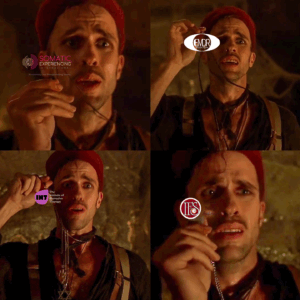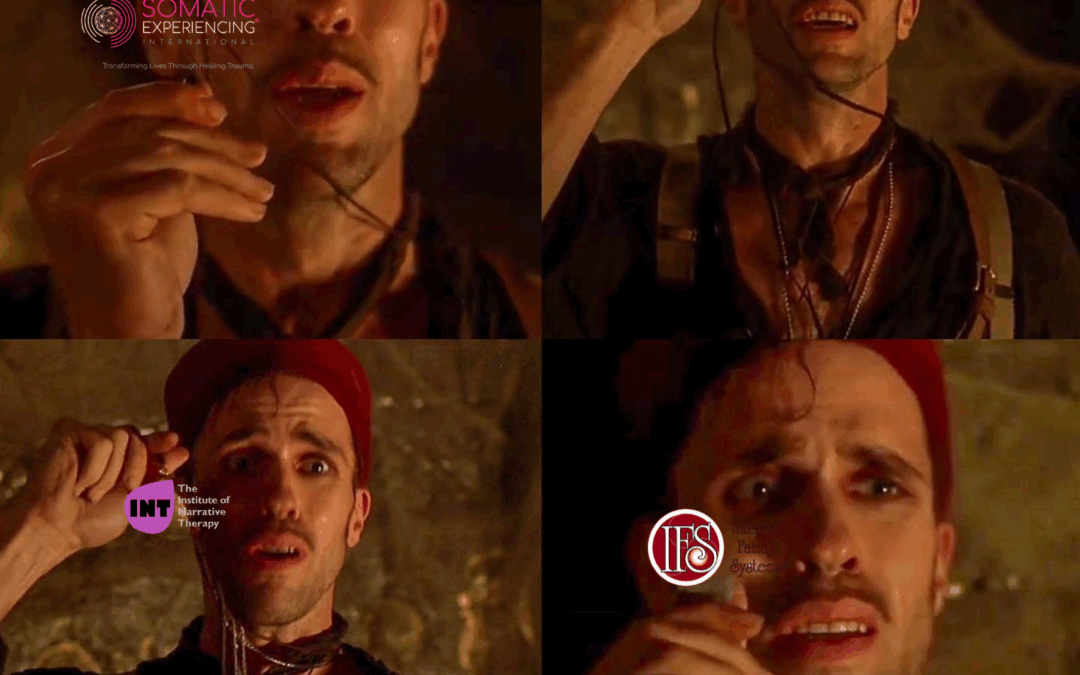The Mummy and the Necklace of Prayers
In the 1999 adventure film The Mummy, Brendan Fraser and Rachel Weisz share the screen with a character who becomes the villain’s lackey. Facing death, he clutches at his neck, revealing a jumble of religious pendants. Desperate, he mutters prayers in Hebrew, Arabic, and Latin, hoping one will work.
The scene is funny, but also unsettling. A man with no loyalty to any god, invoking all of them in a shotgun plea for rescue.
That same image comes to mind when I talk to people deep in what’s now called a “healing journey.”

Lana and the Sock Incident
Picture Lana at nine years old. She’s standing in a circle of friends when someone yells, “You’re wearing two different socks!” Giggles ripple through the group. Every eye turns to her.
Her stomach knots. Her cheeks flush. She laughs along, but inside she burns. That night she replays the moment on the bus ride home. The next day, the same dread returns. Soon she begins to pull back, avoiding the same group of friends.
The Beginning of a Healing Journey
Fast forward a decade. In college, a friend tells Lana she has trauma and should see a therapist. She finds one online, books an appointment, and tries EMDR. It helps some. Encouraged, she devotes herself to healing.
She follows mental health accounts. The algorithm floods her feed. With each scroll, she collects a new framework for her social anxiety.
-
A somatic therapist tells her trauma lives in the body.
-
An internal family systems therapist describes exiled parts.
-
A psychoanalyst warns of unresolved parental conflict.
-
A narrative therapist sees patriarchal scripts at work.
-
An attachment specialist calls her avoidant.
The Necklace of Labels
Soon Lana doesn’t just feel awkward. She now identifies as neurodivergent, avoidantly attached, a trauma survivor with unprocessed body memories, exiled parts, and patriarchal conditioning.
Her self-concept has become the same necklace of pendants from The Mummy. Each label hangs heavy, strung together into an identity that feels more permanent than the awkwardness she began with.

When Labels Become the Condition
This isn’t unusual. As a therapist and professor, I see many young people stockpiling clinical terms. It’s like the blind men and the elephant: one grabs the trunk and calls it a snake, another hugs the leg and calls it a tree. Same person, different conclusions.
The danger is that the labels themselves become the problem. Instead of, “I sometimes feel awkward in groups,” the story shifts to, “I’m avoidant, neurodivergent, traumatized.” Those identities calcify. They weigh more than the behaviors they were meant to explain.
A Case for Psychotherapeutic Monogamy
No one’s entirely to blame. Clinicians promote the approaches they believe in. Social media amplifies it. Clients, eager for answers, consume it all.
But I’d argue for something else: psychotherapeutic monogamy.
Find a lens that resonates. Work with a therapist you trust. Learn that theory deeply. Read books, join that community, and let it shape your growth. Just as importantly, resist the urge to collect every other label along the way.
Choose One Pendant
That way, when life gets hard, you’re not burdened by a tangled mess of diagnoses. You won’t scroll endlessly for the next therapeutic deity. Instead, you’ll have a single pendant you know well — not a necklace so heavy it keeps you from moving forward.

